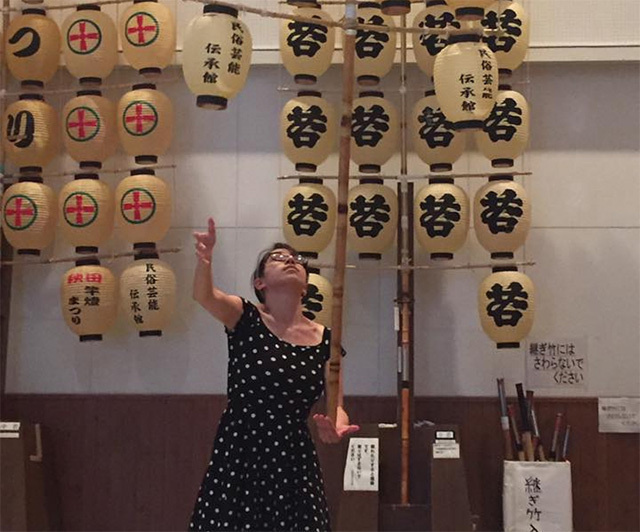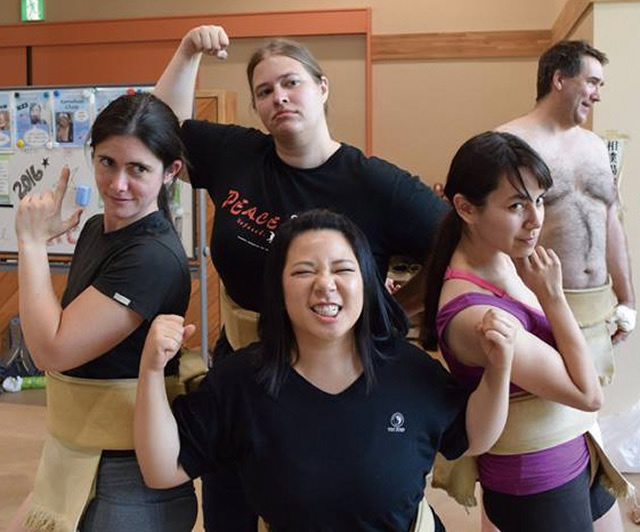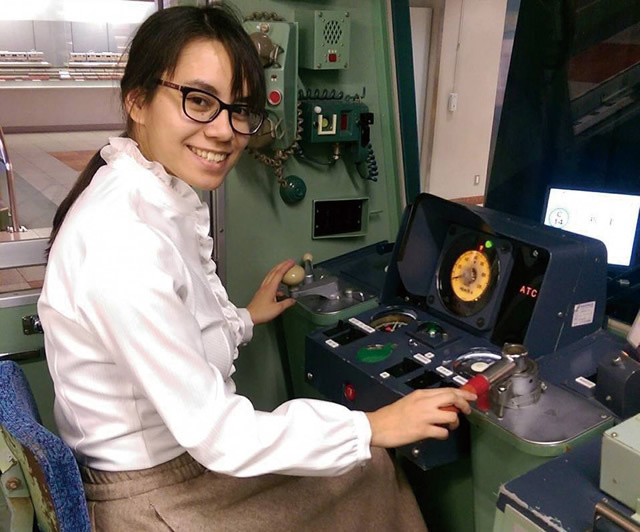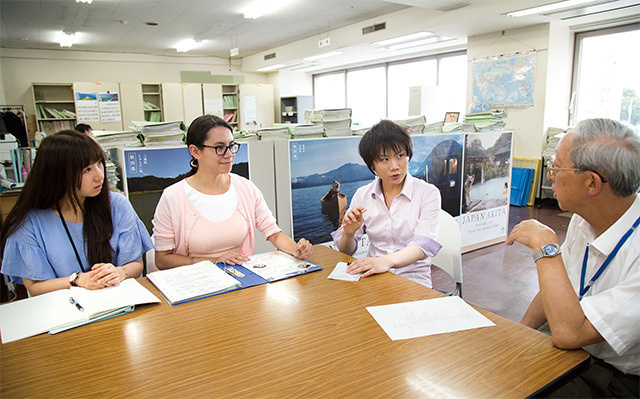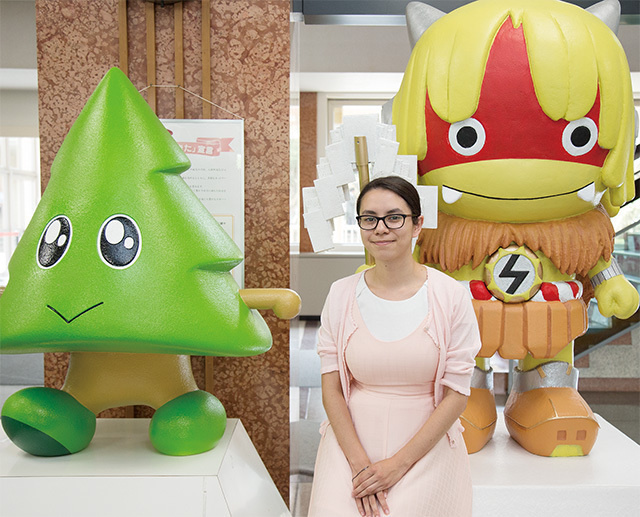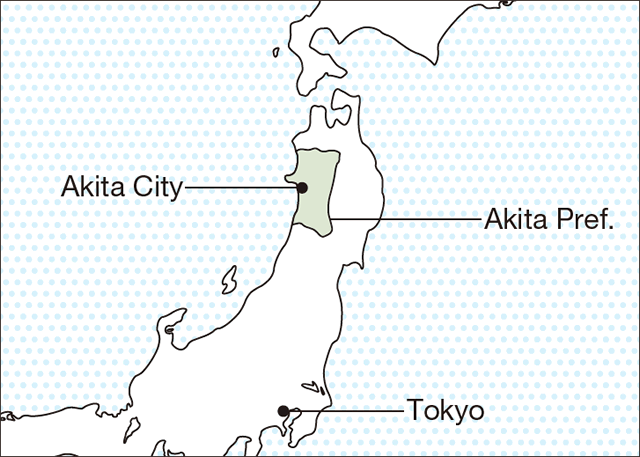Jennifer Campbell
Born in Wisconsin, United States. Has worked as a CIR in Akita Prefecture since 2015. Enjoys doing capoeira, a Brazilian martial art, in her free time. Loves visiting Akita’s beautiful beaches, hot springs, and mountains.
At first I didn't know I was interested in Japan. I’d been watching anime since I was a little child, but not until high school did it dawn on me that anime was Japanese. By then, I had moved from watching anime to playing Japanese video games. I liked to try memorizing the game theme songs, even though I could not understand the words.
Perhaps it was my affinity towards Japanese anime that led me to major in Japanese in college. I have to say, I fell in love with my Japanese class from day one. To be honest, however, I did not learn much of the language in my first two years. It was when I came to study in Tokyo for my junior year abroad that I made significant progress. Language school drilled us so hard in grammar, kanji, and writing that I could not help but to fall asleep at my desk doing homework.
In Tokyo, along with language, I learned the tea ceremony from very strict teachers. If I made one mistake, they had me start all over again from the very beginning. My legs ached when I stood up from the seiza kneeling position. But being the last student to leave the room gave me a closer relationship with my teachers. At our final tea ceremony, they presented me with a yukata , a summer kimono. To me, it was a token of both our tight relationship and my hard work.
I also took koto lessons in Tokyo. I had played string bass and guitar for many years, so my fingers were already calloused, making it easier for me to press down hard on the horizontal koto strings. Koto’s unique musical notation led to my interest in the katakana writing system, now used primarily for foreign loan words. I surveyed different generations of Japanese as to how they used katakana, research that formed the basis for my senior thesis on the evolution of katakana usage.
Campbell balances kanto, long bamboo poles with lanterns, which are used in Kanto Matsuri, a popular festival in Akita.
The day after graduation, the JET Programme accepted me as a Coordinator for International Relations (CIR) and I flew to Akita. As my plane was landing, everything looked so green that I felt I had not left my Wisconsin hometown. My state has a lot of nature, agriculture, and beer, and Akita has a lot of nature, agriculture, and sake. Like my hometown in Wisconsin, Akita has that country hometown feel. People know each other and greet on the street.
Akita is known for its beautiful ladies, but I am more impressed by the beautiful hearts of the Akita people. After a flood in July 2017, the Shinkansen bullet train I was supposed to take to Tokyo to pick up new JET participants was cancelled. I panicked, but my co-worker’s mother helped me change my ticket, took me to the station at five the next morning, and made sure I had breakfast. At times when I was sick, my co-workers brought food and snacks to my house out of pure kindness, without me asking at all.
My work as a CIR includes interpretation, and translating things like notices for citizens and letters from ambassadors. I make sure JET participants are adapting well and living comfortably, and coordinate events that bring together JET participants and local people. I also visit schools to teach American History, and have students re-enact the Boston Tea Party, for example, to get the feel of the American Revolution.
This job has taught me much about taking responsibility. Along with Japanese culture, I have also learned about Russian, Brazilian, New Zealand, South African and other cultures through interacting with JET participants. I have gained a lot of knowledge about Japan and a huge global perspective. My advice? Be willing to accept anything that comes to you, because something cool will happen. Things will turn out to be okay.
My path from anime to Akita has given me precious understanding of the Japanese language and culture. When my term here is over, I plan to study engineering in Boston. I also hope to apply to work as a resident assistant at the school dormitory that houses female students from Japan. As a bridge across our countries, I want to return to others the hospitality I have so appreciated in Japan.



























